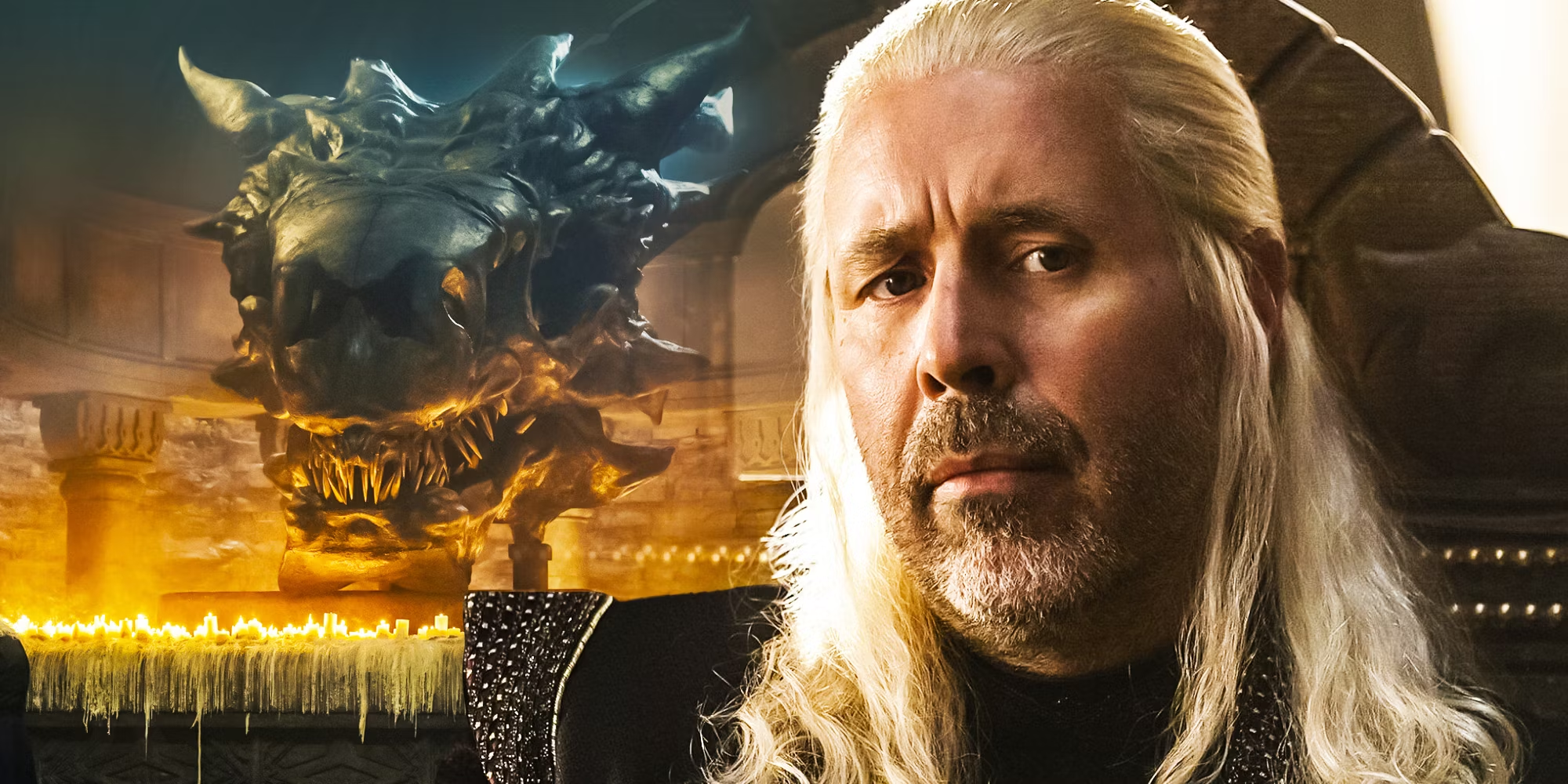In fantasy literature, few creatures hold as much fascination as dragons. Among these magnificent beasts, Balerion the Black Dread stands out as one of the most iconic dragons in George R.R. Martin’s “A Song of Ice and Fire” universe, particularly in the prequel series House of the Dragon. Not only is Balerion known for his immense size and terrifying presence, but he also has a rich history connected to some of the most influential characters in Westeros. This article will explore the question, “Who rode Balerion?” detailing the dragons’ riders and the legacy they left behind.
Understanding Balerion the Black Dread
The Origins of Balerion
Balerion was not just any dragon; he was one of the most enormous dragons in Westeros’s history. Born during the Targaryen reign, Balerion was crucial in establishing the Targaryen dynasty. His name pays homage to Valyria, the home of the Targaryens, and means “the Black Dread.” This dragon was characterized by his black scales and enormous wingspan, capable of covering whole cities in shadow.
The Significance of Balerion
Balerion’s significance in the Targaryen family is monumental. He was not merely a mount but a symbol of power and fear. His ability to breathe fire with enough intensity to melt stone made him a formidable weapon in battle, contributing to the Targaryens’ dominance over Westeros.
Who is Rode Balerion?
Aegon the Conqueror
The first and most notable rider of Balerion was Aegon I Targaryen, commonly known as Aegon the Conqueror. Aegon united the Seven Kingdoms of Westeros under his rule in a series of brutal campaigns known as the Conquest.
- Notable Achievements:
- Aegon’s use of Balerion in battles created fear among his enemies.
- He famously burned Harrenhal, a castle that would later become infamous for its size and strategic location, showcasing Balerion’s might.
Aenys I Targaryen
After Aegon I, his son Aenys I Targaryen also had the honour of riding Balerion. Although Aenys’ reign was marked by a struggle to maintain control, Balerion still played a key role during his rule.
- Challenges Faced:
- Aenys dealt with several rebellions, including the Faith Militant.
- He used Balerion primarily as a symbol of his legitimacy and power rather than as a weapon of war.
Maegor I Targaryen
Maegor I, known as Maegor the Cruel, was another significant rider of Balerion. His reign was characterized by brutality and a relentless pursuit of power.
- The Dragon’s Role:
- Maegor used Balerion in his campaigns to quash dissent, including the Faith Militant.
- Balerion was instrumental in destroying the Great Sept of Baelor, a crucial event in Targaryen history.
The Legacy of Balerion
Balerion’s legacy continued long after his last rider. His descendants would influence the fate of Westeros for generations.
- Death of Balerion:
- Balerion died of old age during the reign of Aegon III, the last Targaryen rider.
- His death marked the end of an era, and many believed that the Targaryen power began to wane with him.
The Cultural Impact of Balerion
Balerion has transcended his role as merely a dragon in a fantasy world. His character has become a symbol of strength, fear, and the complexities of power.
Influence on Modern Fantasy
- Representation of Power: Balerion represents the idea that with great power comes great responsibility.
- Symbol of Fear: He embodies the fear that often accompanies tyranny and domination.
The Targaryen Dynasty
The Targaryens’ relationship with dragons, especially Balerion, shaped their identity and legacy in Westeros.
- Dragons as Weapons: The Targaryens used their dragons to secure their rule and instil fear in their enemies.
- Cultural Heritage: The Targaryens’ history with dragons is fundamental to their identity, influencing everything from their politics to their art.
The Myth and Legend of Balerion
Balerion is more than a character; he is a part of the mythology of Westeros.
The Stories and Songs
Throughout Westeros, stories and songs about Balerion and his riders have been passed down through generations.
- Epic Tales: These tales often exaggerate Balerion’s size and power, adding to his mythic status.
- Cultural Significance: Balerion’s legend contributes to the Targaryens’ mystique, often inspiring awe and fear among the people.
Art and Representation
Balerion has been depicted in various art forms, symbolizing power, fear, and the Targaryen legacy.
- Sculptures: Many artists have created sculptures of Balerion, often portraying him in fierce poses.
- Paintings: Paintings often depict battles involving Balerion, capturing his fearsome beauty.
Table: The Riders of Balerion
RiderReignNotable Achievements
Aegon I Targaryen 1 AC – 37 AC United the Seven Kingdoms, burned Harrenhal
Aenys I Targaryen 37 AC – 42 AC Struggled with rebellion, a symbol of legitimacy
Maegor I Targaryen 42 AC – 48 AC Quashed dissent, destroyed the Great Sept of Baelor
Aegon III Targaryen 131 AC – 157 AC Last Targaryen rider, witnessed Baler ion’s death
Conclusion: The Enduring Legacy of Balerion
The question “Who rode Balerion?” opens the door to an exploration of the rich tapestry of Targaryen history. Balerion the Black Dread is not just a dragon; he is a monumental figure in the story of Westeros, embodying the complexities of power, fear, and legacy. His riders—Aegon I, Aenys I, and Maegor I—each left indelible marks on history, shaping the destiny of the Seven Kingdoms.
As we delve into the lore of Westeros, it becomes clear that Balerion’s legacy continues to resonate. He serves as a reminder of the heights of power and the depths of tyranny woven intricately into the fabric of Targaryen’s history. The tales of Balerion and his riders will live on, captivating future generations’ imaginations.
In conclusion, the legacy of Balerion the Black Dread and those who rode him is a tale of ambition, power, and the consequences of dominance. Understanding who rode Balerion allows us to grasp the monumental impact dragons had on the history of Westeros and the Targaryens, making it a story worth telling and retelling for years.

